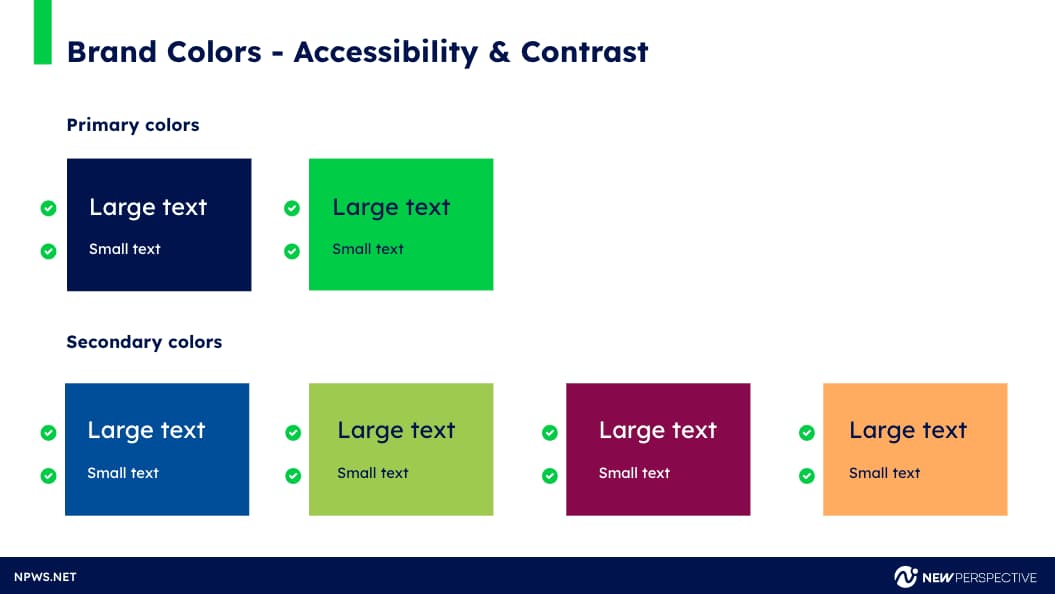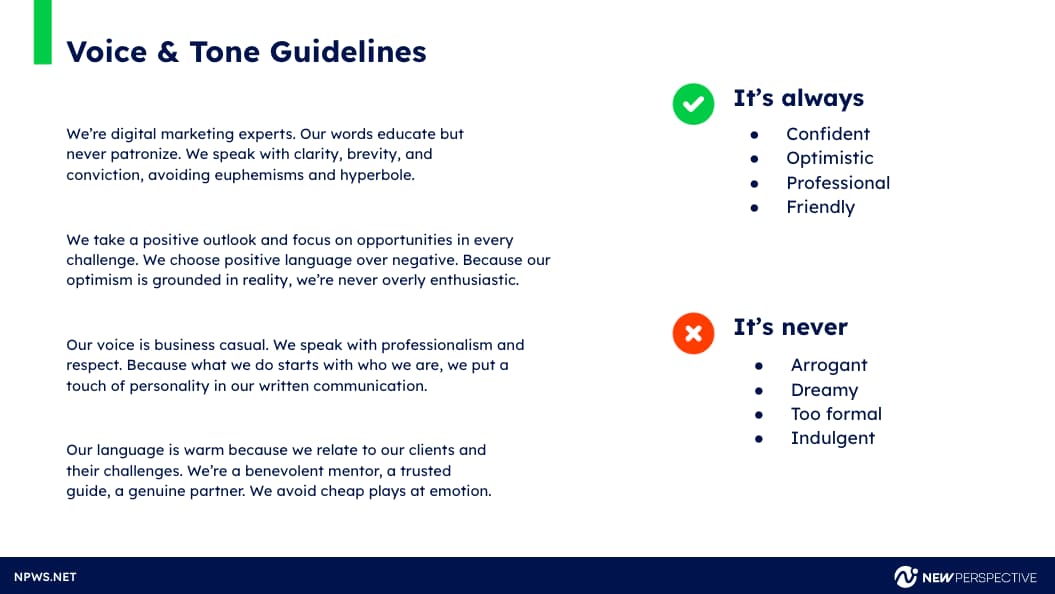Effective B2B Rebranding Strategy: Key Steps for Success

Your brand identity should align with your company mission and be cohesively applied across all aspects of your business. So how do you know if your company’s current identity works for or against you, and what should you do if a rebrand is on the table?
Today we will cover how a B2B company should assess the need for a rebrand. We will also discuss the steps to execute a successful rebrand from start to finish.
Top reasons why your B2B company may need a rebrand
Deciding whether your company needs to rebrand requires careful evaluation of your current branding and business goals. Here are some signs that your company may need to rebrand:
- Your current brand identity needs to resonate with your target audience.
- Your current identity doesn't accurately reflect your unique value propositions.
- Your business has evolved or is undergoing significant changes, such as offering new products and services, targeting different markets, or updating business strategies.
- Your brand assets look outdated or unprofessional and do not meet the professional standards of your industry.
- Your company has experienced a significant crisis or reputation issue and needs to restore trust and credibility with customers and stakeholders.
- Your brand does not stand out from competitors, and you struggle to gain market share.
If any of these situations apply to your company, consider rebranding.
Phases and steps of a successful rebranding project
Managing a successful B2B rebranding project requires thoughtful planning, creative strategy, and precise, thorough execution. Here are some helpful steps to plan, implement and roll out an incredible brand from start to finish.
Phase 1 - Planning phase - Setting yourself up for success
At the start of the project, it is important to lay a solid foundation. You need to understand, from an empathetic perspective, who you are trying to reach. Try to understand their goals and challenges. How does your company accommodate them? It is also good to consider your competition. How do they position themselves, and what makes your company different from them?
This phase should cover the timelines, responsibilities, and resources required for each stage of the rebranding process. Be prepared to adjust the plan as necessary based on the feedback received from your target audience and company stakeholders.
Some key steps for the planning phase of rebranding:
1. Identify your target audience
What types of businesses are you targeting, and who are the specific decision-makers within those businesses? What are their goals and pain points? Again, going through the exercise of creating buyer personas is an excellent way to navigate this.
2. Conduct a brand audit
Evaluate your current brand identity in full. Identify what is working and what isn’t. This will help you target areas where your brand needs improvement and guide your rebranding strategy.
3. Identify and research your top competitors
Analyze their branding strategy. Look at their logo, colors, messaging, and overall brand identity. Pay attention to any elements that stand out and any areas where you think they may be lacking.
4. Defining your brand's purpose, values, and personality
These aspects should align closely with your target audience's needs and differentiate your brand from your competitors.
Phase 2 - Implementation phase - Putting it all together
Now that you have laid your foundation, it is time to develop your brand assets. This includes your visual identity (logo, color palette, and brand guidelines) and how you speak to your audience.
As identified in the strategy, your new brand's personality should be clear and consistent across all channels. In addition, across all aspects of your marketing, your brand should be easy to understand, memorable, and differentiated from your competitors.
Take inspiration from our own logo and rebranding we did in 2023 (examples below) or the rebranding of Mastercard, which simplified its logo and brand elements to create a more modern and unified brand identity.
Some tips for solid rebranding implementation:
1. Create a memorable logo

Your brand’s logo should be unique and easy to remember. Make sure it is adaptable across various digital and print media of both large and small scales.
2. Create clear brand messaging
Please make sure to keep your brand messaging clear and easy to understand. The voice and tone should be consistent across all platforms, including your website, social media, and marketing materials.
3. Choose colors wisely

Colors can evoke emotions and have different cultural meanings. Consider the associations your chosen colors may have and ensure they align with your brand values and messaging. It is also essential to be mindful of compliance and ensure that your color combinations have a high enough contrast ratio for legibility.
4. Document your brand rules

Once you have developed your new brand identity, it is helpful to consolidate all your assets into a brand book with the directions for using them. These rules should then be shared with your team so that your brand application is consistent from all sources.
Phase 3 - Rollout phase - Share it with the world!
You have your logo, new color palette, and thorough brand guidelines created. You’re done. Not. Now it's time to roll out the rebrand and share it with the world.
Here are some key steps to help you with a successful rebranding rollout:
1. Update all branding materials
This includes updating your website, social media profiles, business cards, letterheads, email signatures, and other materials featuring your brand. Could you make sure all these assets are consistent with your new brand identity?
2. Announce the rebrand
Communicating the rebrand to your customers, employees, and stakeholders is important. You should explain the reasons behind the rebrand and what it means for your organization. This can be done through email newsletters, social media posts, and press releases.
3. Collect and monitor feedback
Be mindful of customer, employee, and stakeholder feedback to ensure the rebrand is well received. Promptly address any concerns or issues that arise.
4. Integrate the new brand identity into your company culture
For a rebranding project to be sustainable in the long term, it's vital to integrate the new brand identity into your company culture and values. This integration can be achieved through employee training, internal communications, and showcasing the new brand in core company processes and events. When employees embrace and embody the new brand, it becomes a driving force for future success.
5. Celebrate
Finally, celebrate the rebrand with your employees and stakeholders. This could include a fun social media campaign, in-person or virtual launch event, or other creative ways to generate excitement and awareness around your new brand identity.
Benefits of rebranding
1. Increased brand recognition: A well-executed rebrand can help your company stand out in a crowded market and gain more visibility with your target audience.
2. Improved brand perception: Rebranding can help your company shed any negative perceptions or outdated associations and present a fresh, modern image to your customers.
3. Increased customer loyalty: A rebrand can help you better understand your customers' needs and preferences and tailor your messaging and branding to better resonate with them.
4. Improved competitive edge: A rebrand can help you differentiate your company from your competitors and establish a unique value proposition that sets you apart.
Risks of not rebranding
1. Stagnation: Failing to update your branding can make your company appear outdated and out of touch with current trends and customer preferences.
2. Getting lost in the crowd: In a crowded marketplace, it's important to stand out. Failing to update your branding can make it difficult for your company to gain traction and attract new customers.
3. Damaged reputation: If your brand is associated with negative perceptions or outdated values, failing to rebrand can damage your company's reputation and make it difficult to attract new customers or retain existing ones.
4. Losing market share: Failing to differentiate your company from your competitors can result in lost market share and reduced revenue over time.
Ready for a rebrand that will take your business to the next level? Contact us to learn how our expert team can help.




